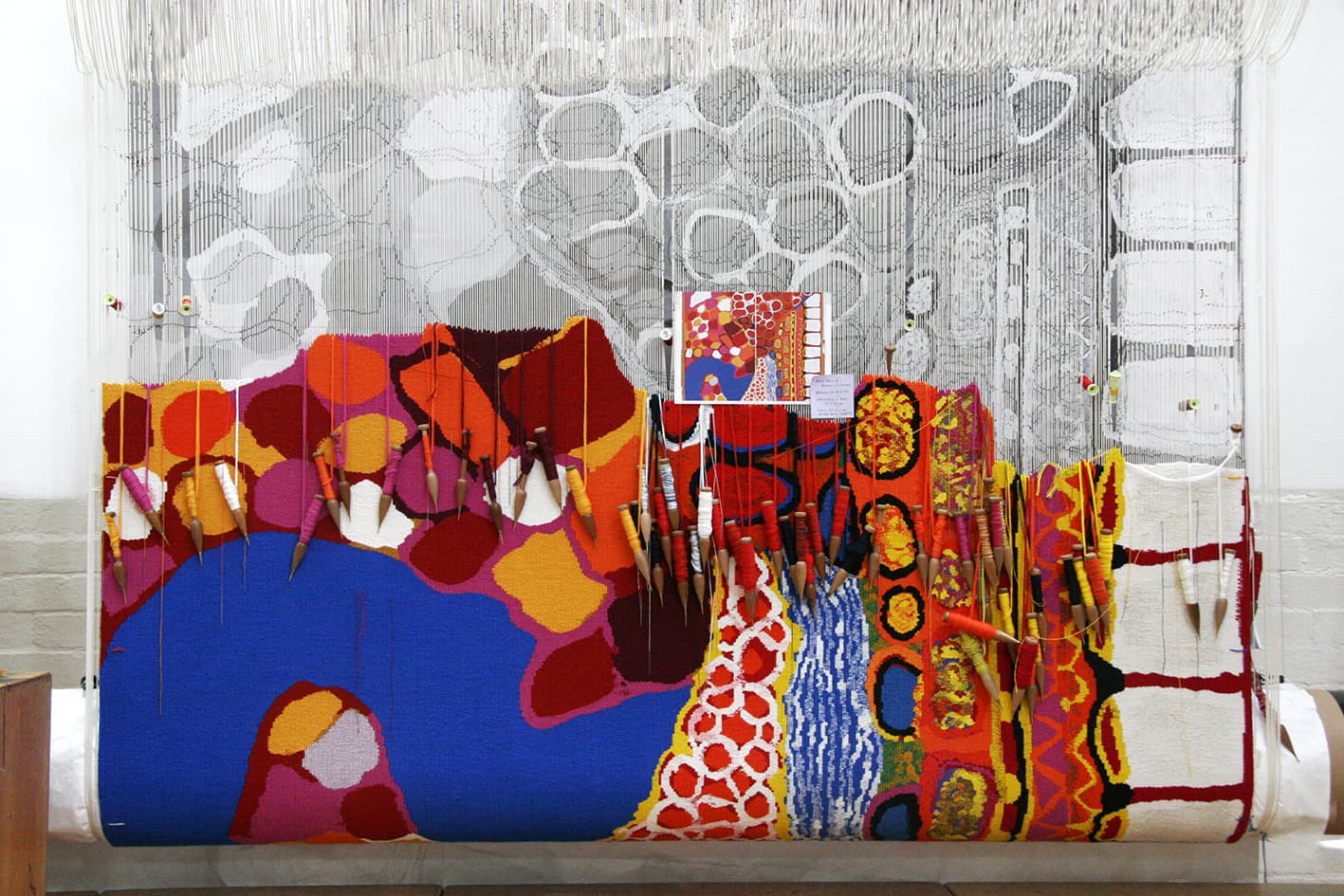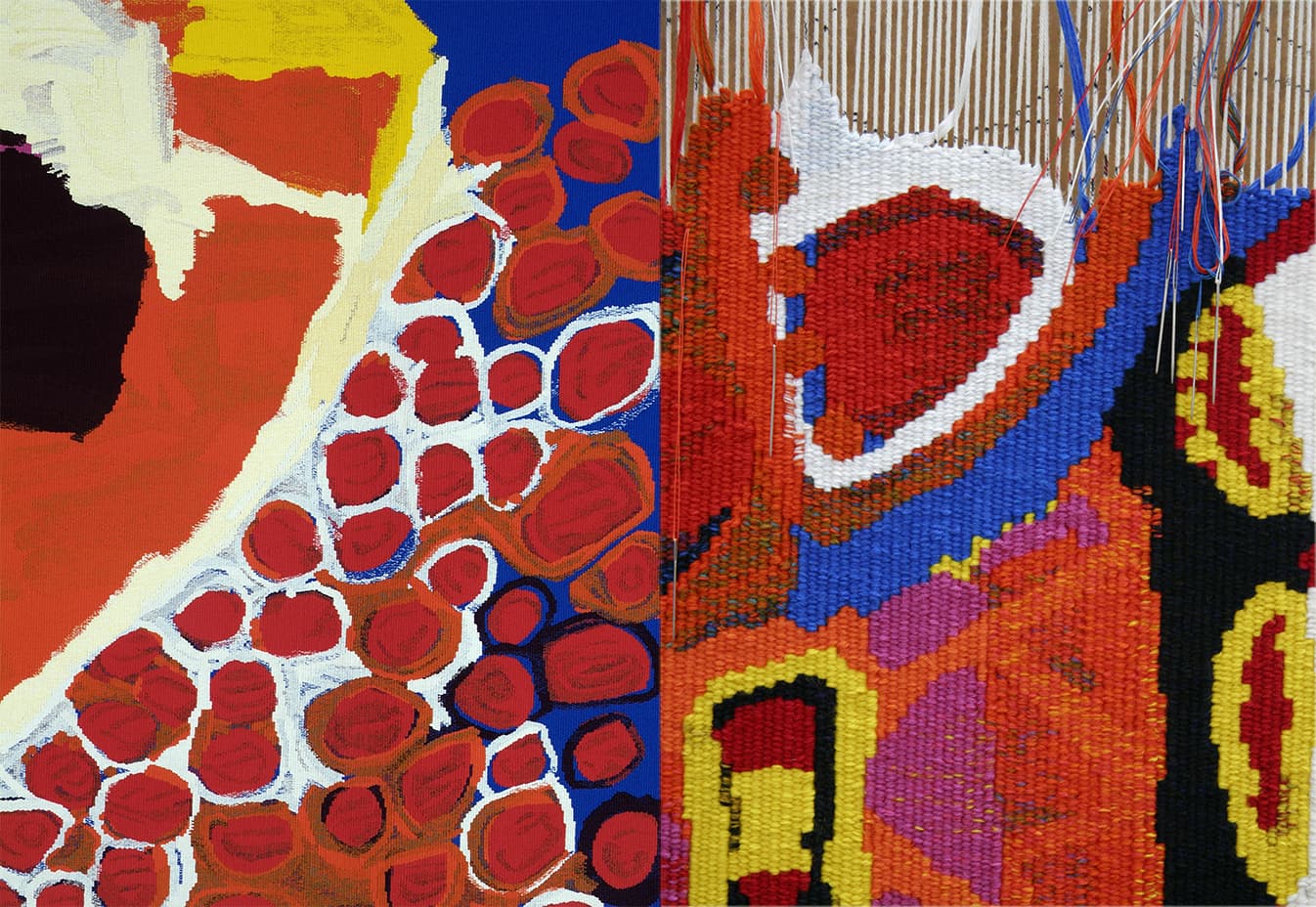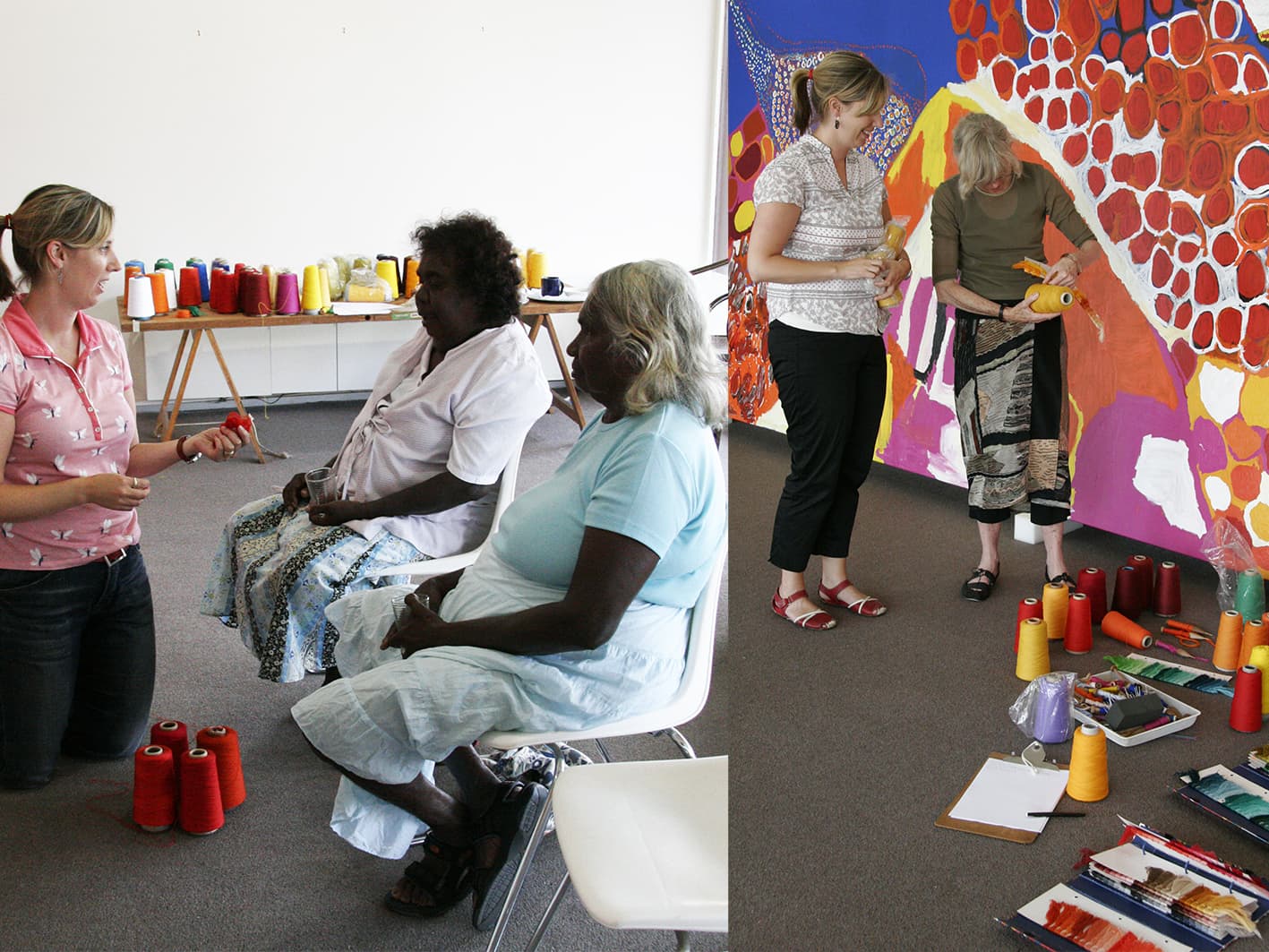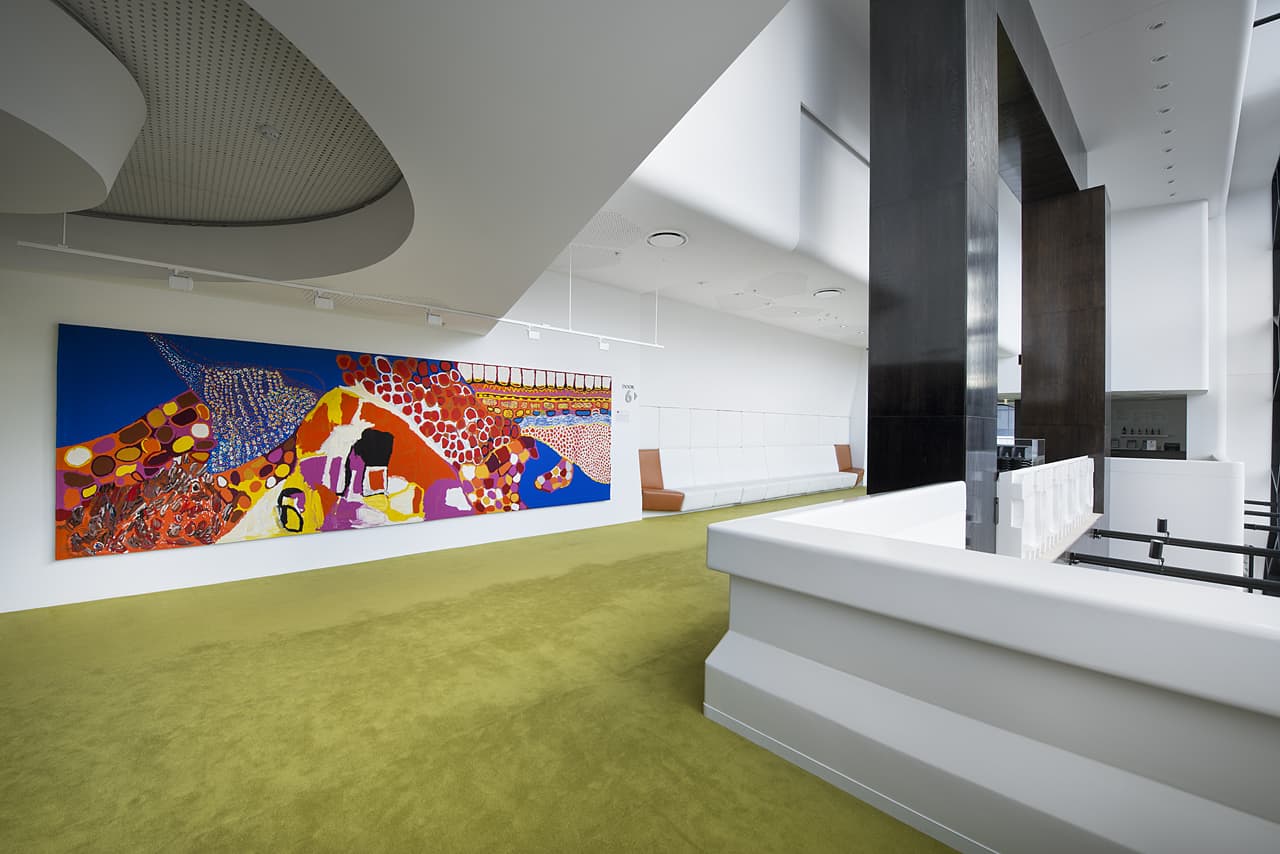




Through the arts program at Mornington Island Arts and Craft Centre, a group of 7 Bentinck Island women came together to paint Dulka Warngiid (Land of All) in 2008. The tapestry was commissioned for the Melbourne Recital Centre, with funding provided by the Hugh D T Williamson Foundation.
Unlike other indigenous Australian communities the Kaiadilt (Bentinck Island) have no graphic, pre-European art tradition, aside from body painting. These artists have been able to build up a collective and personal repertoire of images and symbols- birthplaces, rocks, wild flowers, story places, hunting grounds, reefs, waterholes, body paint and scars. In a broad sense, each of these artists came to painting via more traditional practical artistic pursuits, such as making hibiscus bark string, singing, weaving dilly bags and making and repairing fishing nets. Each of the artists explored the materiality of the paint and surface while representing their own connectedness to land, ancestors and community narratives.
"We each painted our country area which was special for us. Our painting is all of our country. That's what the title means — country, place land— land of all."
While the development of the artist's individual mark-making practices has undoubtedly been influenced by the collective, it is often with a different thematic focus. For example, Netta Loogatha composes her paintings as landscapes, while Sally Gabori often focuses on describing a narrative event, like the attempted murder of her brother, King Alfred. Paula Paul's mark making often describes scarification (ritual body decoration), and her marks are purposely raised from the surface of the canvas to emphasize their tactile nature.
The very painterly nature of the brush strokes lends itself to the interpretive process, giving the weavers a lot of room to keep true to the forms of the painting, while providing a lot of information and detail with the tapestry process. There are 7 different styles of painting contained within the image and each artist has a different approach to mark making. This meant that the weavers had to rethink and adjust their approach for each separate area within the design.